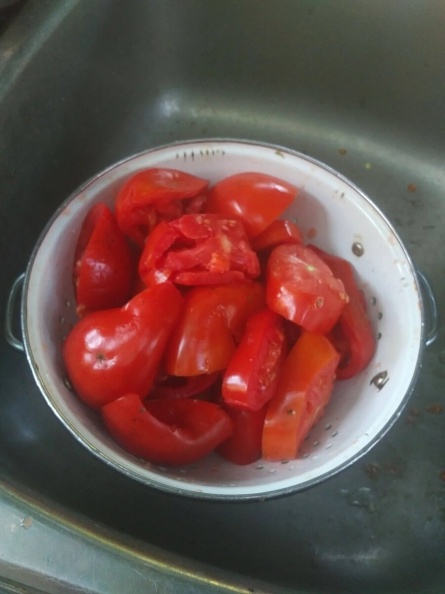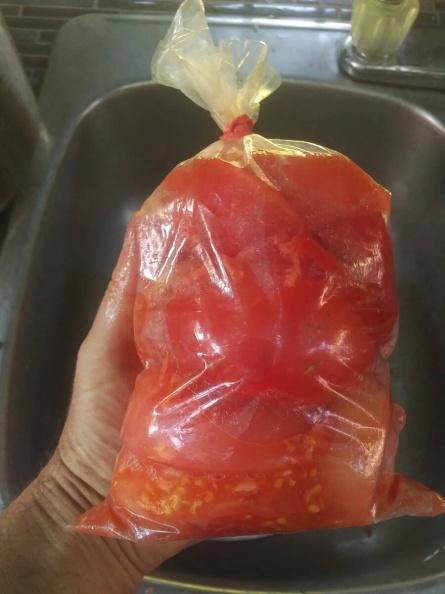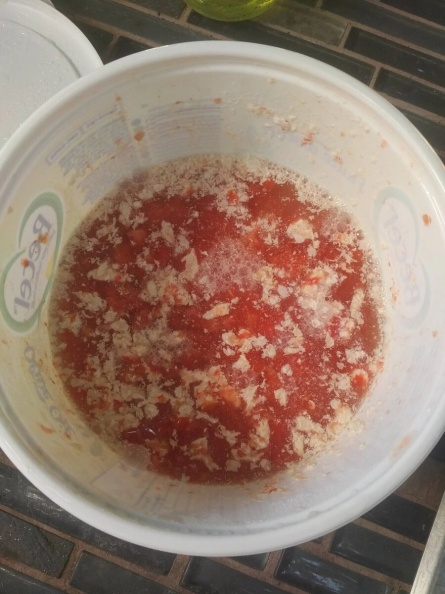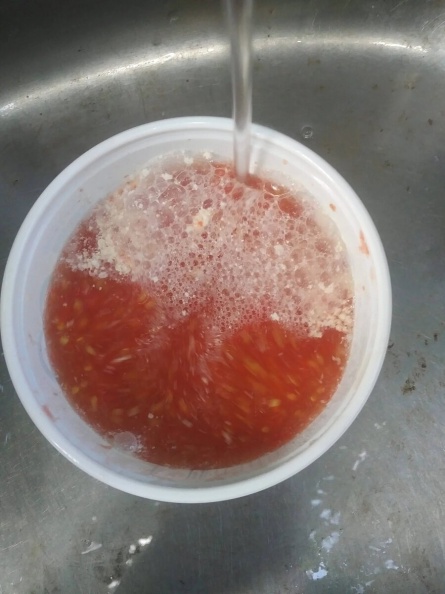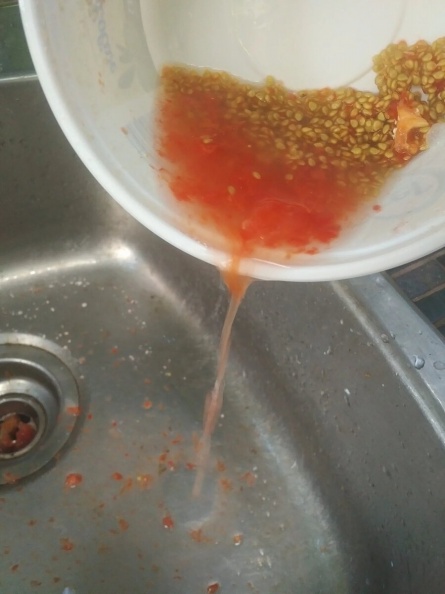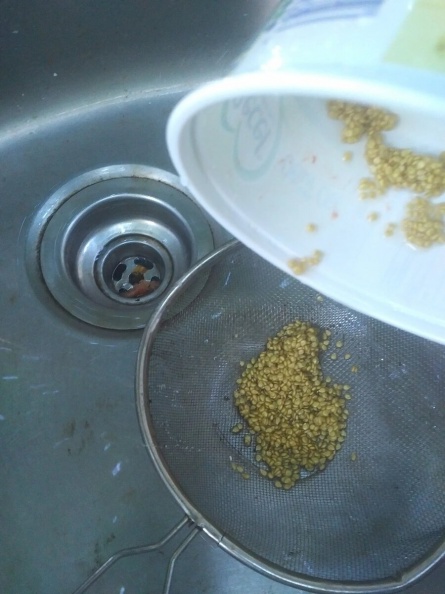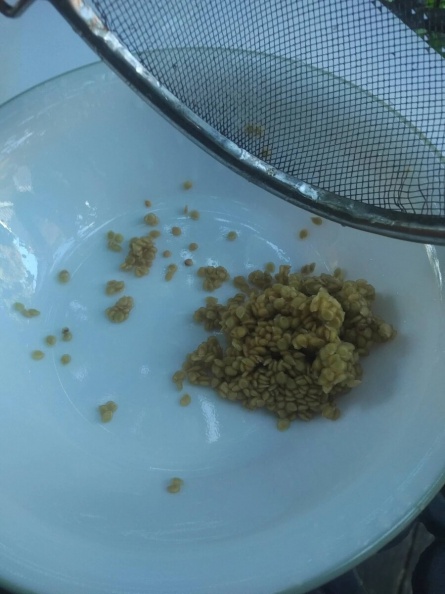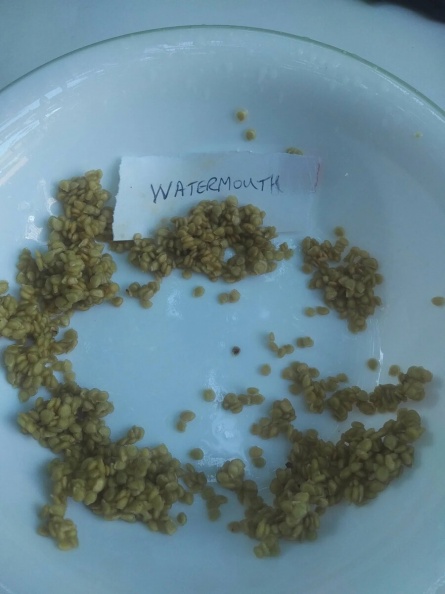Back to October 2020 Newsletter
How to Save Lots of Tomato Seeds
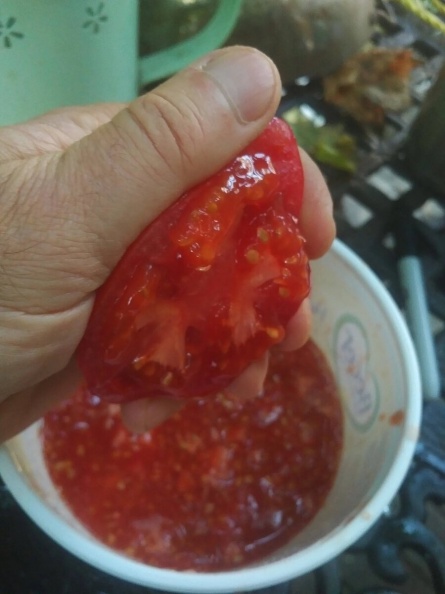
Sometimes you want to save a lot of seeds.
Say you have a favourite tomato and you want to share it with other gardeners through a seed exchange or a seed library. If you read the previous article you know that it's easy to save a few seeds, but it could be a lot of work to clean off a few hundred or so.
You also know that if you want to multiply a tomato variety properly you have to save seeds from several tomatoes, from several plants. Otherwise, subtle genetic variations will be lost and you'll wind up with a weaker variety.
There is an easy way, and you get to save your tomatoes and eat them too!
First, the serious considerations
The previous article explains that tomatoes are mostly self-pollinating, but not always perfectly so. We recommend that you grow your seed-saving tomatoes at least 5m away from any other tomato varieties, and make that 15m just to be on the safe side if you're growing seed commercially or for a seed bank. Otherwise, bumble bees and a few other tomato pollinators can sometimes move pollen from one variety to another and cross your seeds.
As well, the previous article warned against bottlenecking. Make sure you save seeds from at least 6 healthy tomato plants of the same variety, and for commercial purposes we recommend a minimum of 20 plants. That may sound like a lot, but it isn't worth losing precious genetic diversity in your variety by only saving seeds from a few plants.
And now, the fun part!
The seeds in your tomatoes are ripe when the tomatoes are ripe, so all you need to do is squeeze out the seeds and clean off the jelly from each one. In the previous article we said that you can just rub that jelly off, but for more than a few seeds that's a lot of work. Instead, you can just let it rot!
Simply, if you scoop out the seedy pulp from your tomatoes and let it sit in a container at room temperature, the jelly will rot off of the seeds in about 3 days, but it takes a few more days than that before the seeds will sprout. So after 3 days rinse the smelly rotten pulp off of the seeds, let them dry in open air, and you will have perfectly clean, excellent tomato seeds to share, exchange, and even sell!
Here's the process in more detail, with the added bonus that you get to eat the tomatoes too.
|
Step 1: Wash your tomatoes carefully and cut out any spoiled parts. Slice them in half and squeeze the seeds into a container.
|
Step 2: Since you washed the tomatoes and cleaned away any spoiled parts, the rest is good to eat. |
|
|
|
|
|
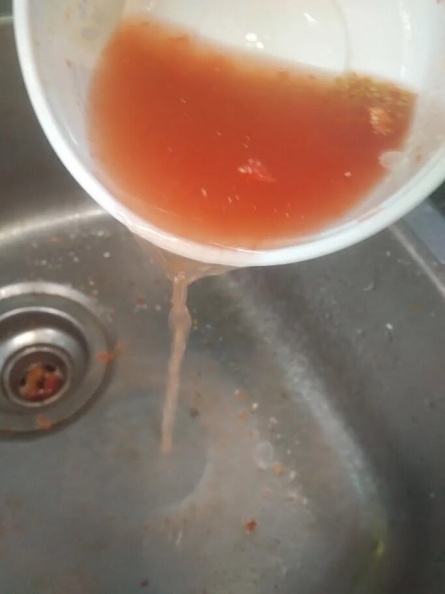 Step 6: Pour off the water. You will notice the seeds have sunk to the bottom so it's easy to pour off the pulp. |
|
|
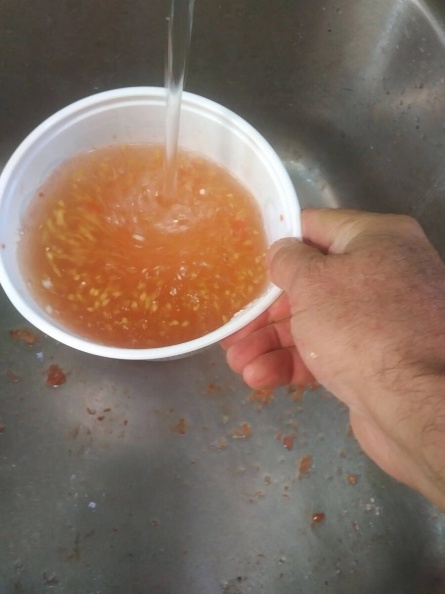 Step 8: Refill the container with more water and pour it off a few more times. |
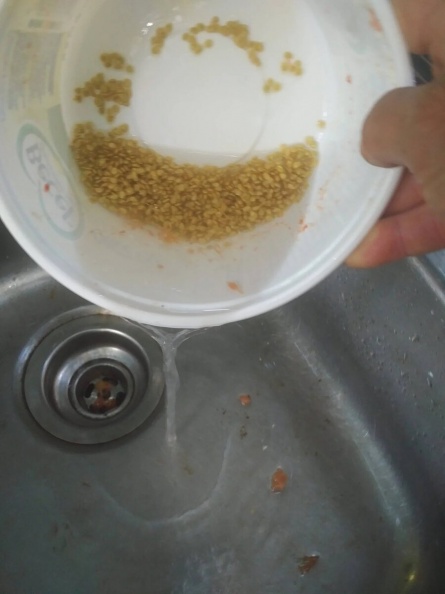 Step 9: After 3 or 4 rinses almost all of the pulp should be gone. Rinse one more time to remove the tiniest bits. |
|
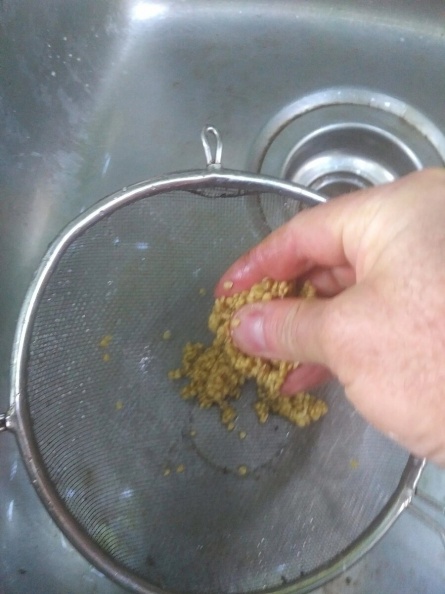 Step 11: You can give the seeds a gentle squeeze to get a lot of the water out. They dry faster. |
|
|
|
Not yet a member?
An annual membership to Seeds of Diversity gives you access to our seed exchange, seed grow-out programs, and our online news.

We depend on donations to do our work.

Thank you for your support!

